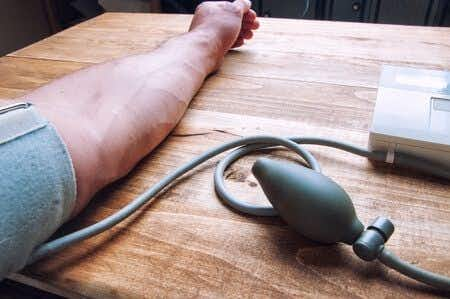This is a case involves a college-aged patient who had been diagnosed with a thyroid condition, and his endocrinologist had prescribed cortisone and other medications to treat that condition. The patient eventually fell acutely ill during practice for his college football team, and was admitted to the hospital. During his stay, the patient was unconscious and was given multiple doses of vasopressin and other medications to raise his blood pressure. Although his blood pressure increased, he developed severe constriction of the blood vessels in his legs which was apparently not noticed until he was given a sponge bath. A few days later, when the nurse took off the socks on the patient’s legs, his feet were discolored and he had very little, if any, pulse in his feet. Several consults were then called, an order was given to discontinue the vasopressors and Heparin and aspirin were added. On the recommendation of another doctor, he was transferred to another medical institution where they believed he had compartment syndrome. A fasciotomy was unsuccessful, and due to the gangrenous nature of his legs at that point, a bilateral, above the knee amputation was required.
Question(s) For Expert Witness
1. Is it appropriate to use vasopressors (as opposed to some other drug to increase BP or perfusion)?
2. When vasopressors are used, what steps should be taken to monitor the health of a patient?s limbs?
3. If a patient is showing diminished blood flow when on vasopressors - should this be monitored and balanced so that once normal BP is achieved, blood flow to the limbs should be developed?
Expert Witness Response E-001199
I am a board-certified pulmonary and critical care physician with a busy practice at a large tertiary referral center. I practice daily in the ICU environment and perform all critical care procedures, including tracheostomy. It is appropriate to use vasopressors only after appropriate volume resuscitation has been administered. Of particular importance to this case is whether the patient was given an appropriate amount of stress dose (i.e. 100mg i.v hydrocortisone every 8 hours) steroids since he was in acute physiologic distress. If this was not given, it would have necessitated the use of excessive amounts of vasopressors to attempt to compensate for the lack of glucocorticoid activity. It is important to check peripheral pulses during vasopressor infusion. This is particularly important if the vasopressor is being delivered through a peripheral vein, as the limb into which the infusion is given is at high risk of necrosis from excessive vasoconstriction. Pulses should be checked at least every shift (q8h) in the presence of vasopressor use, either by palpation or Doppler ultrasound. More frequent checks are warranted if findings of limb ischemia or compromised perfusion are noted. Normal blood pressure is not the goal of resuscitation with fluids and vasopressors in the setting of septic shock. The goal is to obtain a mean arterial pressure (MAP) of 65 or greater. The least amount of vasopressor needed to maintain a MAP of 65 or greater should be used. If vasopressors were not titrated downward despite MAP > 65, this could be a deviation from standard of care. It is never appropriate to not check peripheral pulses for 2 days. It is possible to check pulses with SCD or TED hose on, so they can be left on IF pulses are present. If pulses are absent, the devices should be removed so that a more thorough limb inspection can be performed. If stress dose glucocorticoids were not administered, that's a problem.
About the author
Joseph O'Neill
Joe has extensive experience in online journalism and technical writing across a range of legal topics, including personal injury, meidcal malpractice, mass torts, consumer litigation, commercial litigation, and more. Joe spent close to six years working at Expert Institute, finishing up his role here as Director of Marketing. He has considerable knowledge across an array of legal topics pertaining to expert witnesses. Currently, Joe servces as Owner and Demand Generation Consultant at LightSail Consulting.



